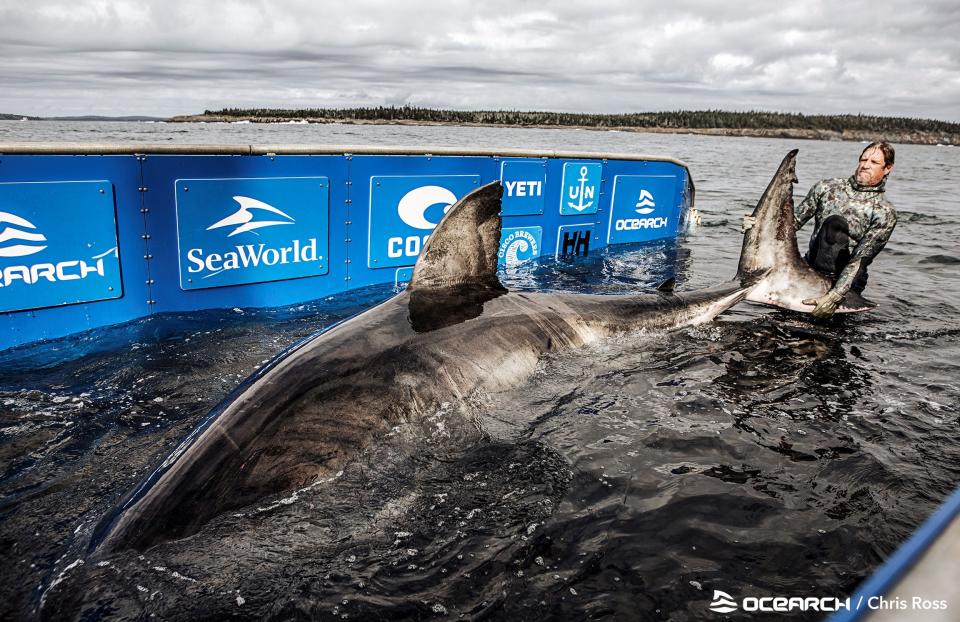At more than 3,500 pounds, this great white shark is swimming off New Jersey coast
ASBURY PARK, N.J. – Nukumi, a mammoth-sized female great white shark wearing a satellite tag on her dorsal fin, has reached the New Jersey coast.
Pronounced "noo-goo-mee," Nukumi measures 17 feet 2 inches and weighs in at 3,541 pounds, making her among the largest of the apex predators in the ocean.
She was tagged by OCEARCH on Oct. 2, when she was swimming off the south coast of Nova Scotia, during the group's month-long expedition to the Canadian coast.
OCEARCH is a nonprofit research group that is placing satellite tracking tags on great white sharks to gather information for science on the shark's life cycle. The group began its work in 2007.
The shark's movements are tracked in real time with OCEARCH's Global Shark Tracker app. A "ping" occurs when the animal's dorsal fin is above water long enough for the satellite to pick up its location. The location is then marked on the app. Nukumi "pinged" Saturday off New Jersey.

Researchers estimate Nukumi is more than 50 years old and could have birthed as many as 100 pups over her lifetime. But much is still to be learned about the reproduction cycle of great white sharks.
Her name refers to the wise old grandmother of the same name that is spoken in legends by the Native American Mi'kmaq people, a culture that has deep roots in Canadian Maritime provinces.
Chris Fischer, OCEARCH expedition leader and founding chairman, said last month that the name "just jumped out to us. It's a fitting name – she's a matriarch."
Fischer, who observed her tagging, said she was battle-scarred from a lifetime in the ocean. He observed scars on her face and belly, which he said are most likely from fights with seals and birthing pups.
At 50 or so years, she also slipped past fishermen during the 1970s and 1980s, when hunting great white sharks was considered bravado and no protection existed for the fish. They're now illegal to catch in the United States
Fischer said Nukumi is "winning the battle of natural selection," and the great white shark population needs more of her genetics to pass on.
Nukumi is the largest great white shark OCEARCH has tagged in the western Atlantic Ocean. She is larger than the great white shark Mary Lee.
Mary Lee was 16 feet and 3,456 pounds when she was tagged in 2012 off the coast of Cape Cod. Her satellite tag went silent in 2017. Fischer said then that the battery may have died.
Tag batteries typically last five years, though the battery in Katherine's tag, a 2,300-pound female great white shark that OCEARCH tagged in 2013, is still pinging.
Nukumi has traveled 991 miles since she was tagged. She could be migrating to the southeastern U.S. coast, a similar route that Mary Lee and Katherine have been shown to take.
The trusted place to find the best home service providers. Find local pros.
Follow Dan Radel on Twitter: @DanRadelAPP.
This article originally appeared on Asbury Park Press: Mammoth great white shark Nukumi reaches New Jersey coast

